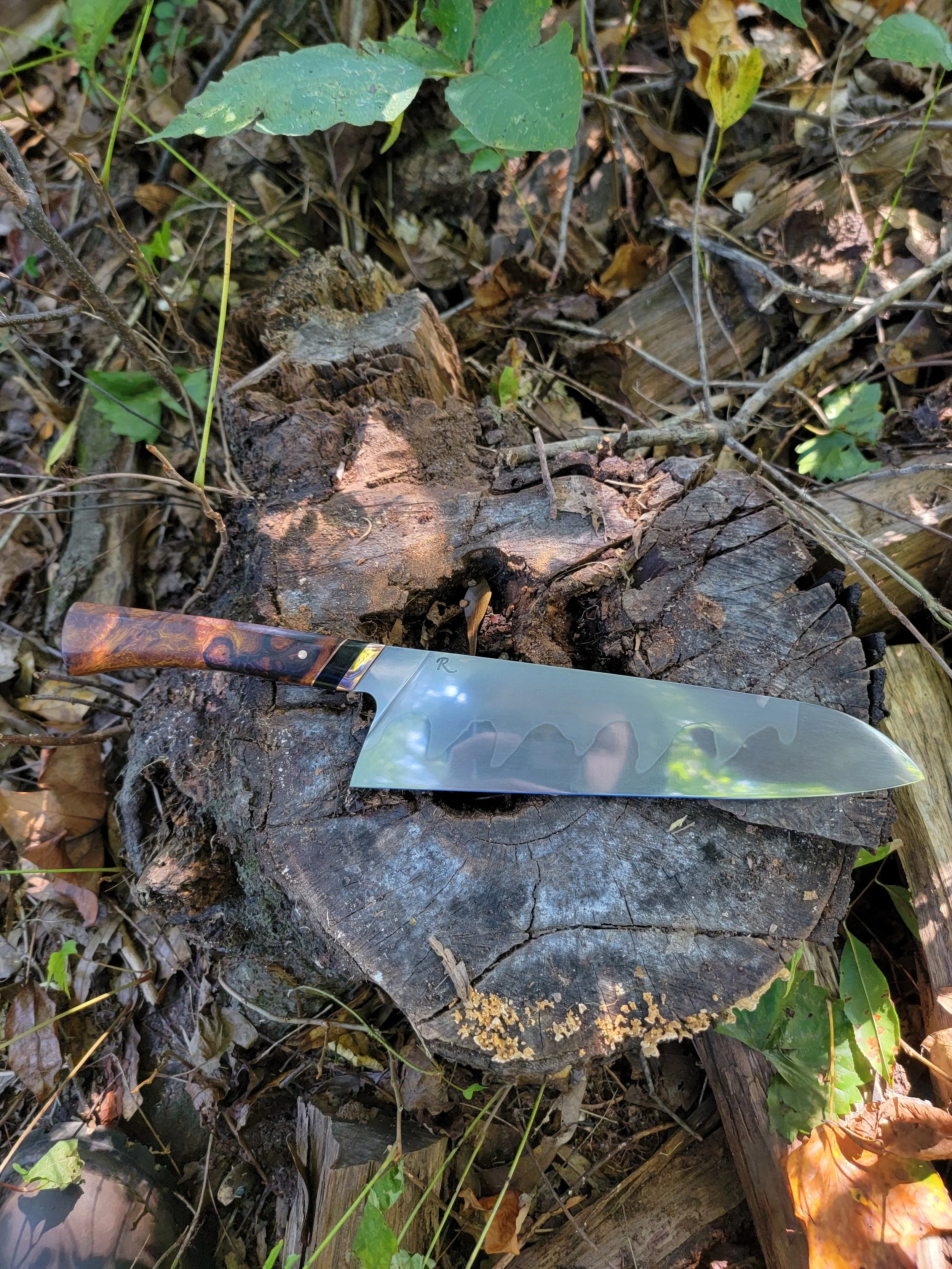 Image 1 of 6
Image 1 of 6

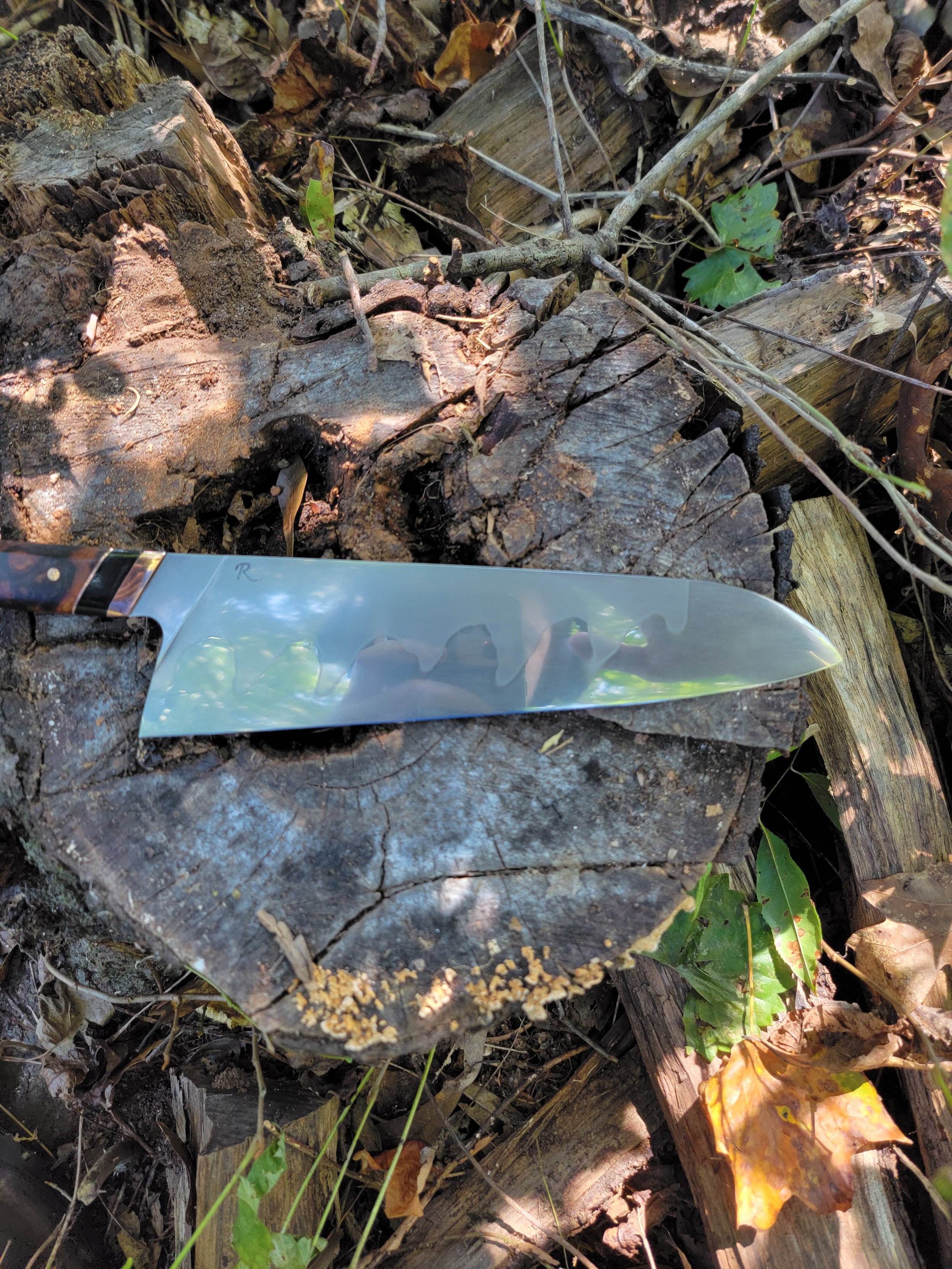 Image 2 of 6
Image 2 of 6

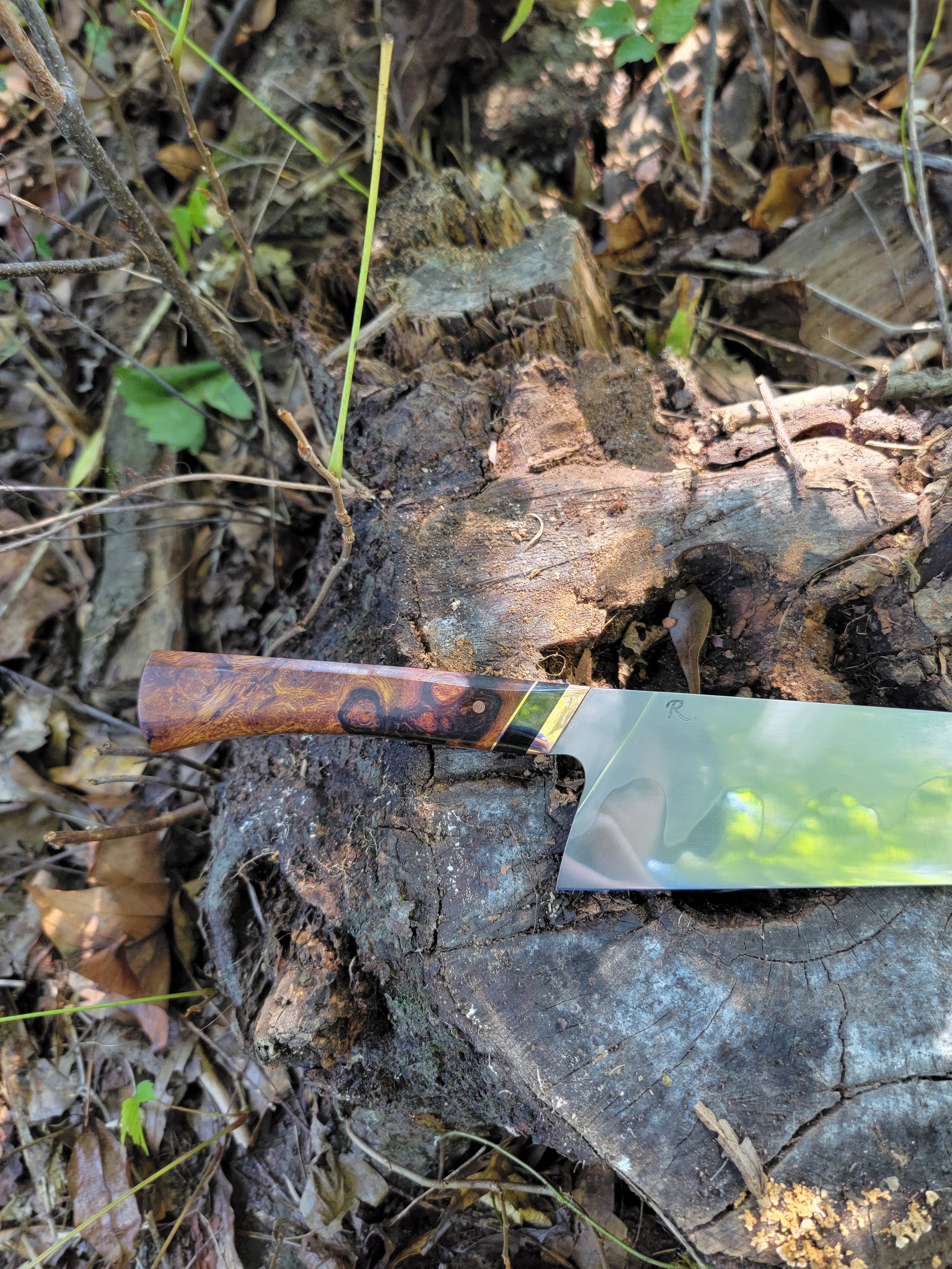 Image 3 of 6
Image 3 of 6

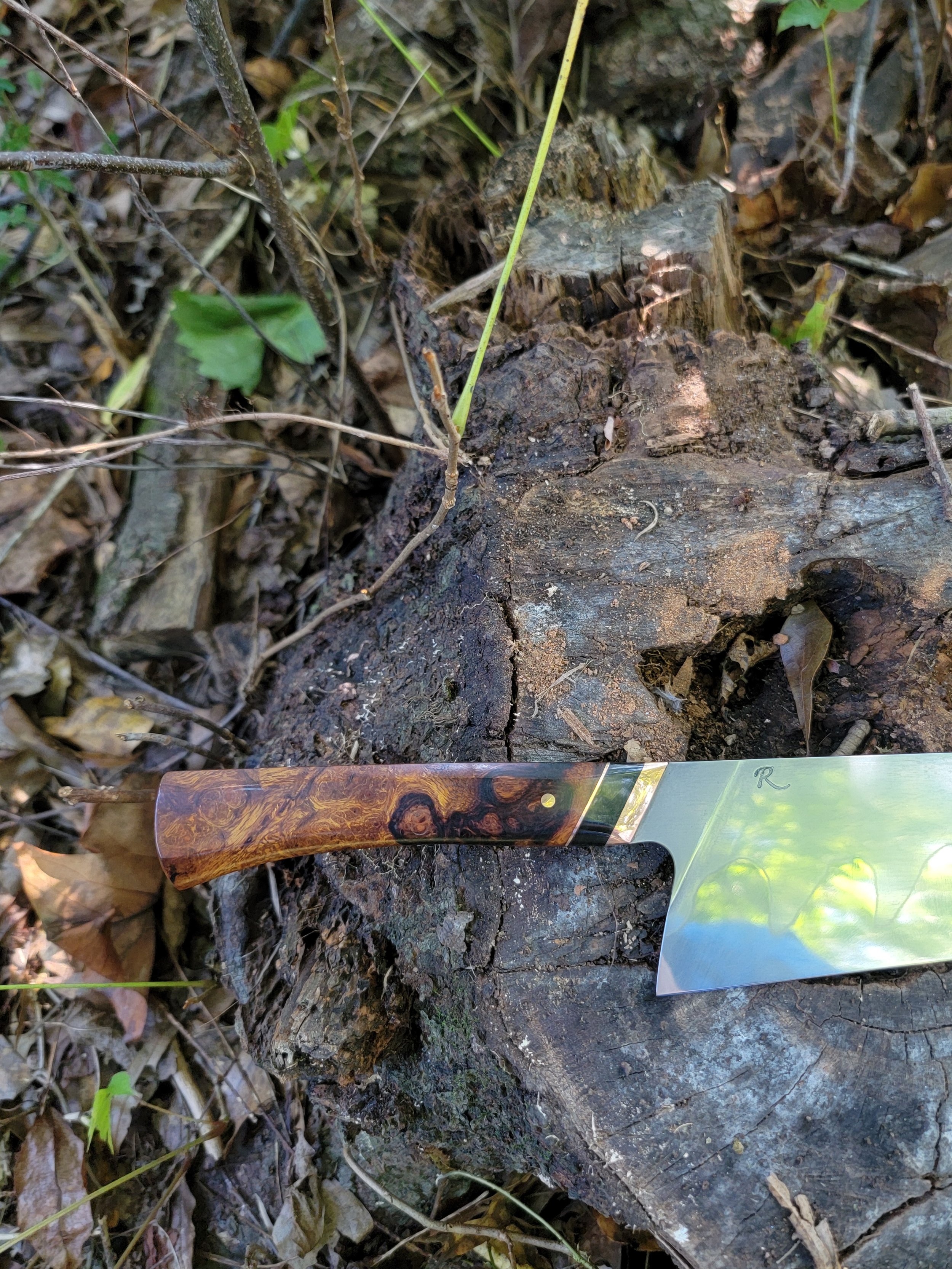 Image 4 of 6
Image 4 of 6

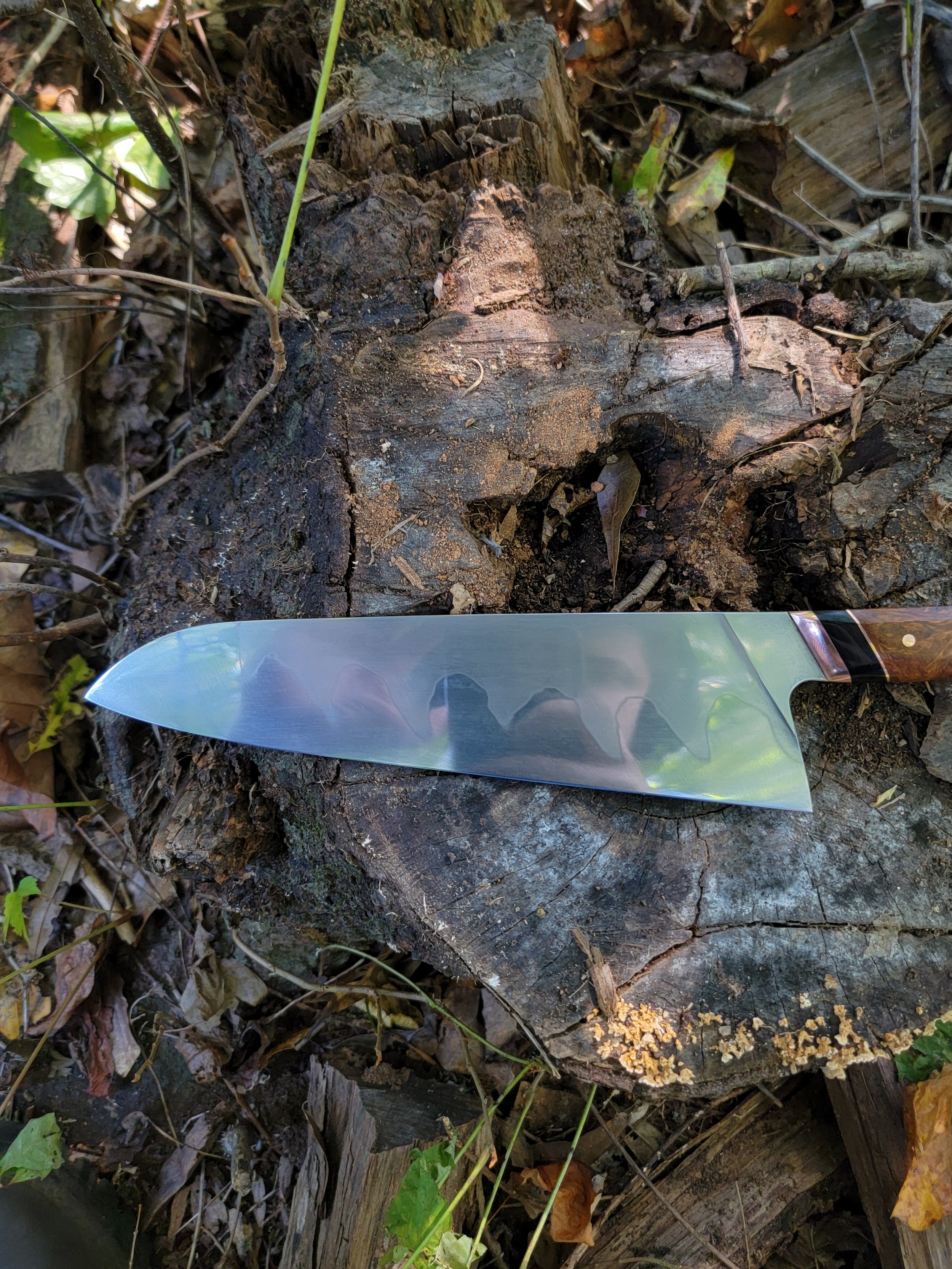 Image 5 of 6
Image 5 of 6

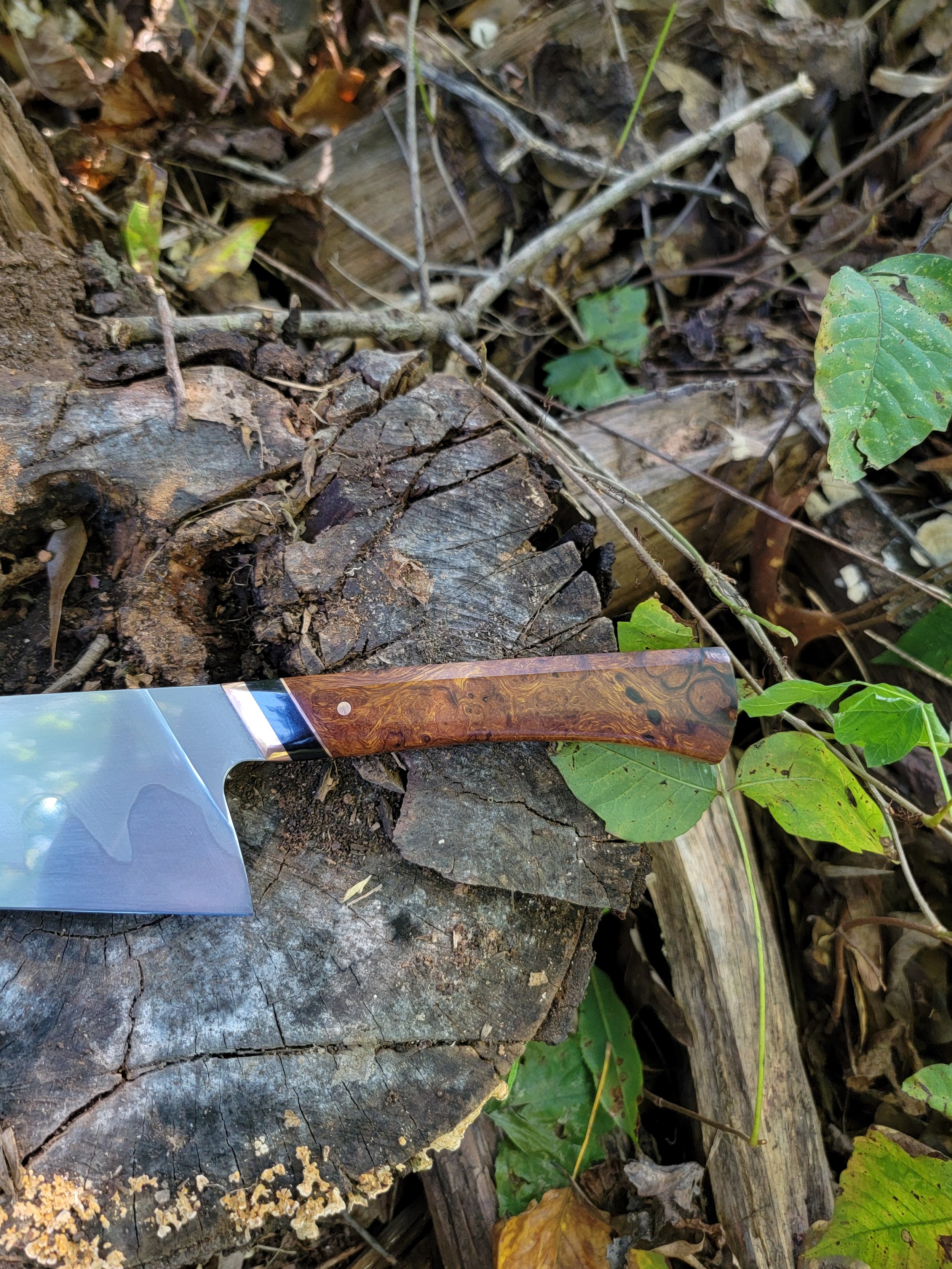 Image 6 of 6
Image 6 of 6







Gyuto in Carbon with Hamon
The gyuto is a traditional japanese style chef knife. Originally made to cut meat the gyuto is a very versatile option of most kitchen tasks. The gyuto has a flatter edge than a traditional western chef knife but still allows for some rocking. Making it great for large or small tasks. The blade height allows for great knuckle clearance and the downward pointed tip makes small precise tasks a breeze.
Knife details:
Blade length: 8.25”
Heel height: 2.2”
Handle length 4.9”
Steel: 26c3 Carbon
Handles material: Ironwood Burl, Buffalo Horn, and Copper
Grind type: Walkschliff
Edge thickness and hardness: .005” 64 hrc
Edge angle 15 degrees
Weight: 5.3 oz
Walkschliff description:
The walkschliff grind is a grind that is essentially a double convex grind. Meaning that both the edge and spine are tapered from the middle. This makes the cross section of the knife egg shaped. The reason why i've switched over to the walkschliff grind is
1. Because it adds lateral durability to the knife (including the tip) meaning more durability through hard use.
2. Adds blade stiffness without adding weight
3. In my opinion the best way to get effective food release
4. Adds edge durability without “wedging”. Wedging is when the knife cutting through the food medium is too thick and you experience drag while completing the cut.
Food release is the inability of food to stick to the side of the blade. It's something that isn't very easy to achieve as a knife maker, but professional and home cooks alike look for. In my experience and testing the walkschliff grind is the most effective at achieving this.
A hamon is a style of differential heat treatment started by the Japanese during the samurai era. It is the act of putting clay on the spine of the blade making the edge hard and the spine soft. After the knife is etched and extensively polished, revealing the hard and soft parts of the blade.
The gyuto is a traditional japanese style chef knife. Originally made to cut meat the gyuto is a very versatile option of most kitchen tasks. The gyuto has a flatter edge than a traditional western chef knife but still allows for some rocking. Making it great for large or small tasks. The blade height allows for great knuckle clearance and the downward pointed tip makes small precise tasks a breeze.
Knife details:
Blade length: 8.25”
Heel height: 2.2”
Handle length 4.9”
Steel: 26c3 Carbon
Handles material: Ironwood Burl, Buffalo Horn, and Copper
Grind type: Walkschliff
Edge thickness and hardness: .005” 64 hrc
Edge angle 15 degrees
Weight: 5.3 oz
Walkschliff description:
The walkschliff grind is a grind that is essentially a double convex grind. Meaning that both the edge and spine are tapered from the middle. This makes the cross section of the knife egg shaped. The reason why i've switched over to the walkschliff grind is
1. Because it adds lateral durability to the knife (including the tip) meaning more durability through hard use.
2. Adds blade stiffness without adding weight
3. In my opinion the best way to get effective food release
4. Adds edge durability without “wedging”. Wedging is when the knife cutting through the food medium is too thick and you experience drag while completing the cut.
Food release is the inability of food to stick to the side of the blade. It's something that isn't very easy to achieve as a knife maker, but professional and home cooks alike look for. In my experience and testing the walkschliff grind is the most effective at achieving this.
A hamon is a style of differential heat treatment started by the Japanese during the samurai era. It is the act of putting clay on the spine of the blade making the edge hard and the spine soft. After the knife is etched and extensively polished, revealing the hard and soft parts of the blade.